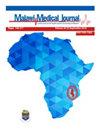A survey of ORF8 sequence and immunoinformatics features during alpha, delta, and wild type peaks of the SARS-CoV-2 pandemic in Iran
IF 0.8
4区 医学
Q4 PUBLIC, ENVIRONMENTAL & OCCUPATIONAL HEALTH
引用次数: 0
Abstract
BackgroundThe Coronavirus disease 2019 (COVID-19) pandemic influences all around the world. The SARS-CoV-2 ORF8 accessory gene represents multiple functions in virus-host interaction. The current study aimed to compare the ORF8 substitutions and epitope features of these substitutions in the various SARS-CoV-2 outbreaks including delta, alpha, and wild type variants in Iran from 2020 to 2022. In addition, we evaluate B cell, HLA I and II epitopes, by in-silico approach to ORF8 binding site prediction.MethodsThe samples were collected from patients diagnosed with SARS-CoV-2 infection via a real-time PCR assay. Then, a conventional PCR was carried out for ORF8 mutations analysis and further Sanger sequencing. Possible important alterations in epitope features of the ORF8 were evaluated by epitope mapping. B cell, HLA class I and II epitopes, evaluated by online databases ABCpred, NetMHCpan-4.1, and NetMHCIIpan-3.2, respectively.Results The current study results could not represent novel variations in seven full-length ORF8 sequences or major ORF8 deletions in 80 evaluated samples. In addition, we could not find any ORF8 Δ382 during each outbreak of variants. Epitope mapping represents differences between the Alpha and other variants, especially in B cell potential epitopes and HLA I.ConclusionThe immunoinformatic evaluation of ORF8 suggested epitopes represent major differences for the Alpha variant in comparison with other variants. In addition, having mild pathogenesis of the Omicron variant does not seem to be associated with ORF8 alteration by phylogenetic evaluation. Future in-vitro studies for a clear conclusion about the epitope features of ORF8 are required.伊朗SARS-CoV-2大流行α型、δ型和野生型高峰期间ORF8序列及免疫信息学特征调查
2019冠状病毒病(COVID-19)大流行影响全球。SARS-CoV-2 ORF8辅助基因在病毒-宿主相互作用中具有多种功能。目前的研究旨在比较2020年至2022年伊朗各种SARS-CoV-2暴发(包括delta型、α型和野生型变体)中ORF8的替换和这些替换的表位特征。此外,我们评估了B细胞,HLA I和II表位,通过芯片方法ORF8结合位点预测。方法采用实时荧光定量PCR法采集确诊为SARS-CoV-2感染的患者标本。然后,进行常规PCR分析ORF8突变,并进一步进行Sanger测序。通过表位定位评估ORF8表位特征可能发生的重要改变。B细胞,HLA I类和II类表位,分别通过在线数据库ABCpred, netmhciipan -4.1和NetMHCIIpan-3.2进行评估。结果目前的研究结果不能代表在80个评估样本中7个全长ORF8序列的新变异或ORF8的主要缺失。此外,在每次变异爆发期间,我们都找不到任何ORF8 Δ382。结论ORF8的免疫信息学评价提示,与其他变异相比,α变异的表位是主要的差异。此外,通过系统发育评价,Omicron变异的轻度发病机制似乎与ORF8的改变无关。需要进一步的体外研究来明确ORF8表位的特征。
本文章由计算机程序翻译,如有差异,请以英文原文为准。
求助全文
约1分钟内获得全文
求助全文
来源期刊

Malawi Medical Journal
Medicine-General Medicine
CiteScore
1.50
自引率
0.00%
发文量
27
审稿时长
>12 weeks
期刊介绍:
Driven and guided by the priorities articulated in the Malawi National Health Research Agenda, the Malawi Medical Journal publishes original research, short reports, case reports, viewpoints, insightful editorials and commentaries that are of high quality, informative and applicable to the Malawian and sub-Saharan Africa regions. Our particular interest is to publish evidence-based research that impacts and informs national health policies and medical practice in Malawi and the broader region.
Topics covered in the journal include, but are not limited to:
- Communicable diseases (HIV and AIDS, Malaria, TB, etc.)
- Non-communicable diseases (Cardiovascular diseases, cancer, diabetes, etc.)
- Sexual and Reproductive Health (Adolescent health, education, pregnancy and abortion, STDs and HIV and AIDS, etc.)
- Mental health
- Environmental health
- Nutrition
- Health systems and health policy (Leadership, ethics, and governance)
- Community systems strengthening research
- Injury, trauma, and surgical disorders
 求助内容:
求助内容: 应助结果提醒方式:
应助结果提醒方式:


